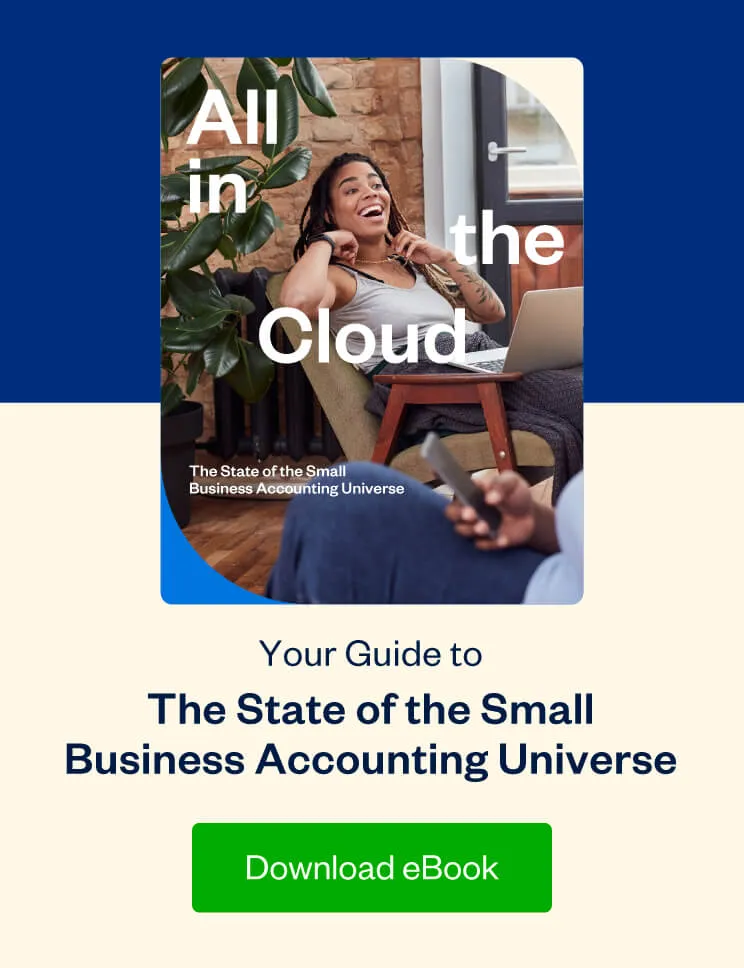For Canadian small business owners, a new year can be the fresh start needed to prepare for a stress-free tax season.

Switching your accounting software isn’t an easy task—particularly if your business has disorganized books or years of financial history. You can make it easier by choosing the right time to switch, though.
Here’s the problem: Every company is different. What works for one small business owner might not work for another. So how do you know what’s best for you?
The best times to change your accounting software are typically after natural “breaks” in your business finances or when work slows down for your company. This is why many Canadian businesses conduct these transitions at the beginning of the year.
In this blog post, we’ll discuss the pros and cons of switching to FreshBooks at the start of the year, as well as other times that may work for your business instead.
Table of Contents
Why Is the Beginning of the Year the Best Time to Switch Accounting Systems?
The process of switching your accounting software requires you to transfer all your financial data from your current system to your new one. It’s a time-consuming task for any business—and even more so for larger and more established ones.
But at the start of a new fiscal year, all your financial data from previous years has (ideally) already been organized and packaged neatly. You’re able to transfer everything over in one lump sum rather than in multiple segments over an extended period.
And if your fiscal year lines up with the calendar year, this also means that your timesheet and payroll data reset for the new year. You don’t have to carry over any of it during the transition.
Here are a couple of other considerations to keep in mind if you decide to switch to FreshBooks during this time of year.
Pro: There’s Usually Less Work to Do
Since most of the country is still getting back into the swing of things after the holidays, your company may have fewer deadlines and obligations to billable clients at the start of the year. This gives you ample opportunity to focus on your internal affairs.
Does your company typically have extra time and resources to devote to new projects at the beginning of the year? If so, consider setting up your FreshBooks account during this time.
Con: You May Have Fewer Team Members to Help With the Transition
On the other hand, many companies see their employees take time off for the holidays or at the beginning of the year. Others might be too occupied with organizing their balance sheets for tax season to handle another large-scale project.
If this applies to your company, this means that transitioning your accounting software at the start of the year may be unfeasible. Switching systems anyway may result in costly mistakes like missing tax deadlines or forgetting to transfer crucial data over to your new FreshBooks account.
Other Good Times to Switch to FreshBooks
If the start of a new year isn’t a good time for you to switch your accounting software, don’t worry. There are 2 other times that can work well for most small businesses to make the transition.
The Start of Q4
After the beginning of a new year, the start of a new quarter may be the next best option. Starting fresh in Q4, in particular, works well because companies are already gearing up for the end of the year—and, hopefully, updating their financial records too.
You also might see your team’s workload slow down around this time. If you work directly with other businesses, for example, you might see fewer projects come in because your clients are also wrapping up for the year.
If your operations tend to slow down at year’s end, prioritizing your switch to FreshBooks will give you and your team more time to set up and learn how to use the platform, as you’ll see below.
Pro: You Have More Time to Plan and Learn How to Use the New System
Switching your accounting software in Q4 gives your staff 3 extra months to get acquainted with FreshBooks and its features before the start of a new year.
After all, the platform’s invoicing and accounting features are designed to help small businesses better understand their finances and grow their venture. Understanding how to use these features—plus others like recurring invoices and time tracking—to their fullest will give your company an advantage in the new year.
Choosing the start of Q4 to switch to FreshBooks also gives you more time to plan out and prepare for the transition, which helps ensure you don’t encounter any unexpected issues during the process.
This is especially important if you want accounting software that integrates seamlessly with the rest of your tech stack. When it works, an integrated tech stack helps you run your business efficiently. But when one part of the system fails, it takes much more time and effort to do even the simplest tasks.
Con: Your Company May Already Be Busy
The problem with switching your accounting software during this time is that the end of the year is already hectic enough as it is. Between year-end tasks and responsibilities, performance reviews, holiday schedules, and more, your business may not have the people or the resources to take on yet another project.
Take retail and e-commerce businesses, for example. These companies may find their teams already slammed with holiday sales, order fulfillment, and inventory management. Taking on another initiative during this time may mean that their holiday revenues fall short of their expectations.
Following Tax Season
In many ways, the months after the tax filing deadline can be a great time for Canadian businesses to switch their accounting software to FreshBooks.
You know, without a doubt, that your business financials are now organized, CRA-compliant, and ready to transfer over. And because you’ve already filed your taxes, you don’t have to worry about dividing your attention between your taxes and the software transition process.
Considering a post-tax season switch to FreshBooks? Here’s what you need to know.
Pro: You Know What You Need to Succeed in the Year Ahead
Tax season gives business owners the opportunity to review their finances and, as a result, to think about how to improve their financial processes for the future.
For instance, if you dreaded having to manually input your invoices and expenses into your accounting system this year because of how tedious it was, you can set up your FreshBooks account so it automatically imports and categorizes expenses as they come in.
Taking the extra time now to update your software (and your accounting processes) ultimately helps you operate your business more efficiently, so you can grow your revenue and your venture faster.
Con: You’ll Need to Use 2 Accounting Systems Until the Transition Is Complete
It’s still important to remember that you’d be switching your accounting system in the middle of the year. Because business will continue as usual, you’ll be using (and paying for) both your existing accounting software and your new one until all of your financial data has been fully transferred over.
It’ll also take more effort and concentration to continually switch between platforms as you run reports, monitor transactions, pay bills, and manage your finances. This, in turn, increases the risk of introducing errors into your financial data.
Final Tips for a Smoother Transition to FreshBooks
As a business owner, you’re already very familiar with how your company operates—and, accordingly, when work slows down for you and your team. The best times to switch your accounting software to FreshBooks are during these times.
Keep in mind that, depending on your business, this process can take a few weeks up to several months to complete. Additionally, you’ll want to factor in what your fiscal year looks like, as well as your project workload and team’s schedules throughout the year when you make your decision. You may even want to consult with your accountant, too, in case they have any insights you might have missed.
Of course, we’re here to help take some of the guesswork out of this important decision.
For one, the award-winning FreshBooks support team will be there for you every step of the way to answer any questions you might have about the account setup and transition processes.
And if you sign up for the FreshBooks Select plan, you’ll get exclusive access to white-glove Support services so you don’t need to face any challenges alone. You’ll also get access to even more offerings—like data migration services and an onboarding process personalized to your business—that are designed to make your transition as seamless as possible.
Interested in learning more about our accounting software? Get in touch with our support team today.
This post was updated in January 2025.

Written by Feli Oliveros, Freelance Contributor
Posted on February 3, 2022
This article was verified by Kristen Slavin, CPA

 Switching Accounting Software? 7 Steps for a Smooth Transition
Switching Accounting Software? 7 Steps for a Smooth Transition How to Work Effectively With Your Accountant in FreshBooks
How to Work Effectively With Your Accountant in FreshBooks 5 Ways Cloud Accounting Software Simplifies Your Workday
5 Ways Cloud Accounting Software Simplifies Your Workday





